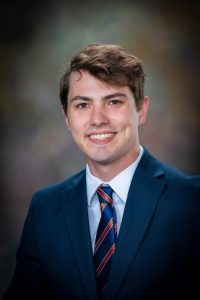
During my initial year at Vanderbilt, I participated in several research rotations, which provided me with exposure to various aspects of materials science and engineering. These rotations were crucial in helping me identify my specific research interests and in developing a multidisciplinary approach to problem-solving. This experience allowed me to collaborate with diverse teams of researchers, gain hands-on experience with advanced scientific equipment, and develop a broader perspective on the field of materials science. The rotations also helped me understand the interconnectedness of different research areas within materials science, which has proven invaluable in my current work combining computational and experimental methods.
Following my rotations at Vanderbilt, I have had the privilege of interning at Oak Ridge National Laboratory. This internship was a pivotal moment in my research journey, offering me the opportunity to work alongside leading scientists and utilize cutting-edge facilities. At Oak Ridge, I have deepened my understanding of advanced computational techniques and electron microscopy. This experience has not only enhanced my technical skills but also solidified my commitment to interdisciplinary research. It has underscored the importance of integrating various scientific approaches to tackle complex problems in materials science.
Overall, these experiences have been instrumental in shaping my research trajectory. They have equipped me with the tools and insights necessary to navigate the challenges of my current work, where I strive to bridge the gap between computational and experimental approaches to advance our understanding of vibrational properties in materials.
My research focuses on understanding how materials vibrate at the atomic level. I study “phonons,” which are quantum mechanical descriptions of vibrational waves in solid materials. Phonons can be thought of as quantized sound waves, just as photons are quanta of light.
I use a specialized instrument called a monochromated and aberration-corrected scanning transmission electron microscope (MACSTEM). This powerful tool allows me to perform electron energy loss spectroscopy (EELS) with high spatial and energy resolution. With this setup, I can precisely measure vibrational modes in materials and gain insights into how the local atomic environment influences material properties.
To complement my experiments, I employ several computational techniques. I use Density Functional Theory (DFT) to calculate the forces on atoms when they’re slightly displaced from their equilibrium positions. This method helps us determine the full range of vibrations (phonon dispersion) and the density of vibrational states in crystalline materials, which are crucial for understanding their vibrational and thermal behavior.
I also develop machine learning models based on DFT calculations. These models are trained on the energies and forces calculated by DFT, allowing us to bridge the gap between the accuracy of quantum mechanical calculations and the efficiency needed for larger-scale simulations. Using these machine learning-generated force fields, I perform Molecular Dynamics (MD) simulations. These simulations let us model how atoms and molecules move over time in systems that are much larger and more complex than what we can study with DFT alone.
To better compare our computational results with experiments, I simulate how the electron beam in our microscope interacts with the sample. I use a method called frequency-resolved frozen phonon multislice, which models how the electron beam travels through the sample, interacting with the vibrating atoms along the way. This allows me to generate theoretical electron energy loss spectra that can be directly compared with our experimental MACSTEM results.
By combining experimental techniques with advanced computer simulations, we are gaining deeper insights into the fundamental behavior of materials. At the nanoscale, heat dissipation becomes a critical factor in the performance and longevity of electronic components. By leveraging our understanding of phonon behavior, we can design novel materials with tailored thermal properties. These materials could revolutionize heat conduction in microprocessors and other high-performance computing components. For instance, by manipulating the phonon dispersion and scattering mechanisms, we might create materials that channel heat away from sensitive areas with unprecedented efficiency.
VINSE Experience
My first year at Vanderbilt University brought an unexpected but incredibly rewarding opportunity: serving as a teaching assistant at the Vanderbilt Institute of Nanoscale Science and Engineering (VINSE). This role turned out to be a perfect blend of my love for scientific research and my growing passion for education and outreach.
As a VINSE TA, I wore many hats. One day I’d be brainstorming new lab ideas, the next I’d be guiding students through experiments in VINSE’s cutting-edge cleanroom and analytical facilities. It was hands-on learning at its finest—not just for the students, but for me too. I got to train on an impressive array of advanced scientific instruments and learn fabrication techniques that significantly expanded my technical toolkit.
At VINSE we covered a wide spectrum of materials science and nanotechnology topics. Students got to fabricate and characterize solar cells, design, and produce microfluidic devices, synthesize, and analyze 2D materials, and even develop innovative new products. It was exciting to see their eyes light up as abstract concepts turned into tangible results right before their eyes.
Even after my official TA duties wrapped up, I couldn’t bring myself to fully step away from VINSE. I stayed involved with some of their outreach programs, which gave me the chance to introduce materials science to local middle and high school students. These young minds would come into our cleanroom, wide-eyed and curious, and leave with a newfound excitement for science.
As my own research has shifted more towards computational methods and simulations, these outreach activities became even more valuable to me. They kept me connected to the hands-on, experimental side of materials science. Plus, there’s something special about seeing a young student grasp a complex concept for the first time—it’s a reminder of why I fell in love with this field in the first place.
I often think about how much I would have loved this kind of exposure when I was their age. Being able to provide that introduction to materials science for these students has been incredibly fulfilling. It’s not just about sharing knowledge—it’s about sparking curiosity and showing them the exciting possibilities in science and engineering.